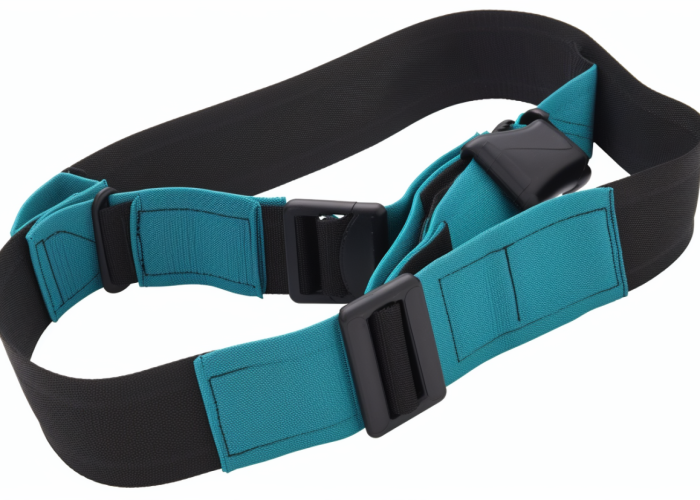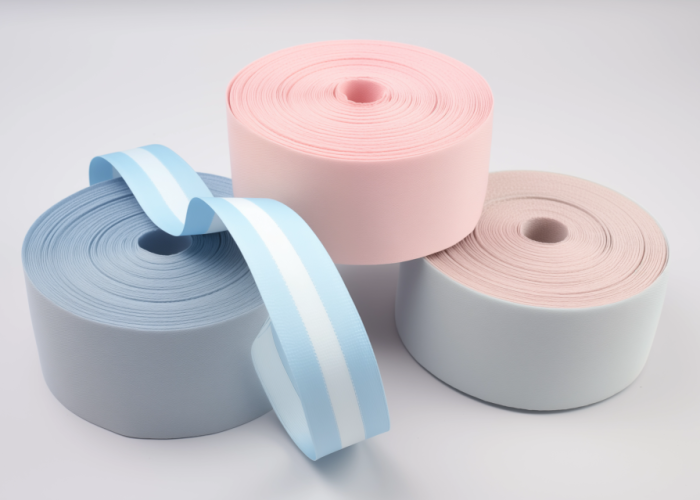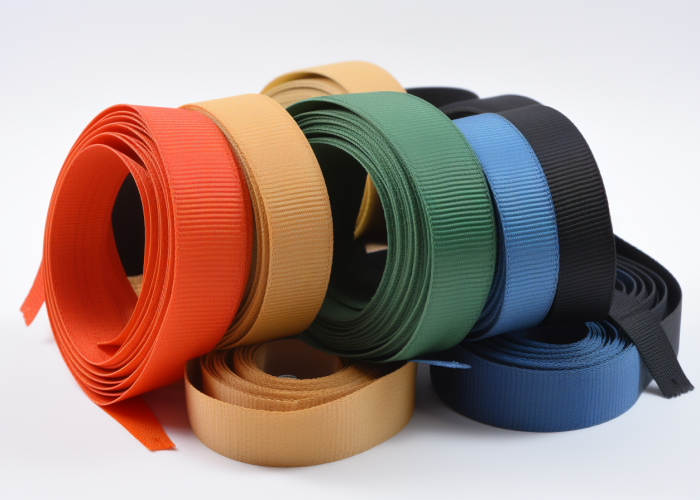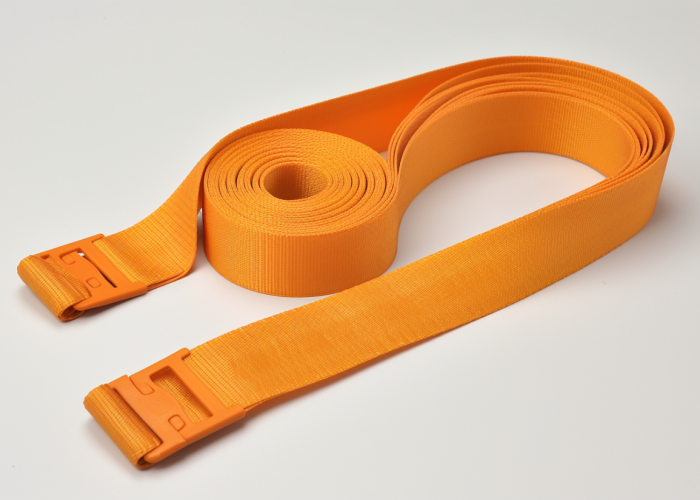Creating positioning straps requires careful material selection to ensure safety and durability. Product developers need solutions that balance load capacity with comfort and adjustability. Our custom webbing manufacturing capabilities deliver precisely engineered materials with specific stretch properties and reinforcement options for your positioning strap requirements.
A universal positioning strap can be custom-made using neoprene, nylon webbing, or elastic band with hook-and-loop closures for adjustability. This approach creates positioning straps for medical, therapeutic, or support applications while maintaining safety standards and patient comfort.
Learn how to design and test positioning straps with the right materials, measurements, reinforcements, and comfort features for your specific application needs.


Webbing manufacturing expert with 15+ years of experience helping product developers build high-performance straps for industrial, medical, and outdoor use.
A universal positioning strap requires four essential components: main strap material (neoprene, nylon webbing, or elastic band), surface layer (soft nylon loop fabric), closures (hook-and-loop strips), and reinforcement materials (duct tape or thread). Tools needed include scissors, ruler, lighter for sealing ends, and optionally a sewing machine.
Key material considerations:
The main strap material determines the positioning strap’s core functionality. High-stretch neoprene offers excellent flexibility and comfort against skin, making it ideal for direct-contact medical applications. Nylon webbing provides superior strength-to-weight ratio with moderate stretch, suitable for applications requiring more stability. Strong elastic bands deliver consistent tension throughout use, beneficial for rehabilitation equipment where controlled resistance is needed.
Closure systems must balance security with ease of adjustment. Hook-and-loop strips offer infinite adjustability within the strap’s length range, making them ideal for medical positioning applications where frequent readjustment may be necessary.
Reinforcement materials prevent premature failure at stress points. Duct tape offers a quick solution for prototype development, while stitched binding with appropriate thread strength ensures long-term durability for production straps.

Measuring and cutting positioning strap materials requires determining appropriate length (3″-45″) and width (1.5″-6″) based on intended use, then adding extra length for folding and attachment points. Precise measurement ensures proper fit and functionality for the specific body part or equipment.
Key measurement considerations:
When determining appropriate length, consider the circumference of the body part or equipment plus additional material for overlap at closure points. For adjustable designs, add 25-30% to the minimum required length to accommodate size variations among users.
Width selection directly impacts comfort and pressure distribution. Wider straps (4-6″) distribute pressure more evenly for applications requiring higher tension, while narrower straps (1.5-3″) offer greater flexibility for contoured surfaces and areas with limited space.
The best way to prepare positioning strap ends is to seal synthetic materials with a lighter to prevent fraying or use sharp scissors for a clean edge on foam or neoprene materials. Proper end preparation prevents unraveling and extends the strap’s usable life.
Key end preparation techniques:
For nylon webbing and other synthetic materials, the heat-sealing process prevents fraying by melting and fusing the fibers at the cut edge. Hold the flame approximately 1/2 inch from the edge and move it across the entire width without lingering too long in one spot.
When working with foam or neoprene materials, maintaining sharp scissors is crucial for achieving clean cuts. Dull cutting tools can compress and distort the material edges, creating weakness points that may tear during use.
To add padding to a positioning strap, slide foam tubing over the main strap material or attach a layer of soft fabric to the inside surface for additional comfort where the strap contacts skin or sensitive areas. Padding is particularly important for medical applications and long-term wear.
Key padding considerations:
The foam tubing method offers quick application by sliding the tube over the strap before adding end attachments. This technique creates uniform padding throughout the entire length with minimal assembly steps.
For targeted comfort, applying soft fabric layers allows customization of padding thickness and placement. This approach is particularly valuable when different sections of the strap require varying levels of cushioning based on contact pressure.
The process for attaching hook-and-loop closure involves cutting strips to match strap width, then securing the hook side to one end and loop side to the opposite end using self-adhesive backing or sewing for maximum durability. Using a box or “X-box” stitch pattern provides the most secure sewn attachment.
Key closure attachment techniques:
Proper positioning of closure components ensures optimal functionality. The hook portion should face inward on one end while the loop component faces outward on the opposite end, creating a secure connection when wrapped around the intended object.
For applications requiring maximum durability, sewing the hook-and-loop components provides superior attachment strength. The recommended box or “X-box” stitch pattern distributes tension across the entire width of the closure, preventing edge separation during repeated use.

To make a positioning strap adjustable and durable, thread the strap through D-rings or sliders, fold the end over by 1 inch, and secure with strong stitching. Reinforce high-stress areas with double-stitching, especially at closures and hardware attachment points. Additional reinforcement with duct tape or extra stitching prevents premature wear.
Key adjustability and durability features:
The slider or D-ring adjustment method creates a simple but effective tensioning system. Thread the strap through the hardware, fold back approximately one inch of material, and secure with strong stitching in a box pattern for maximum strength.
Strategic reinforcement significantly extends service life. Identify areas that will experience repeated stress, such as closure attachments and hardware connection points, and apply double-stitching with heavy-duty thread to prevent material separation during use.
For positioning strap safety, use skin-safe, latex-free materials when direct skin contact is likely, and consider medical-grade Velcro and neoprene for healthcare applications. Regular inspection for wear and replacement of damaged components ensures ongoing safety and effectiveness.
Key safety considerations:
Material selection directly impacts safety for end-users. When straps will contact skin, hypoallergenic materials prevent adverse reactions, particularly in healthcare settings where patients may have sensitive skin or unknown allergies.
For medical applications, using certified medical-grade components ensures compatibility with healthcare protocols. These materials are specifically designed to withstand repeated cleaning and sterilization while maintaining their functional properties.

To test a completed positioning strap, wrap it around the intended body part or equipment to verify proper length and comfort, then adjust closure placement or hardware as needed for secure fit. This real-world testing ensures the strap functions as designed under actual use conditions.
Key testing procedures:
Testing the strap on its intended application reveals practical issues that may not be apparent during construction. Pay particular attention to how the strap conforms to curved surfaces and whether pressure is distributed evenly across the width.
Make final adjustments based on testing results. This may include repositioning closure components, adding additional padding at pressure points, or modifying overall length to achieve the optimal balance between security and comfort for the specific application.
Creating an effective universal positioning strap requires careful material selection, proper construction techniques, and thorough testing. By following these steps, you’ll produce durable, comfortable positioning solutions for various applications. Our custom webbing manufacturing capabilities can deliver precisely engineered materials with specific properties tailored to your unique positioning strap requirements.
Nylon webbing, high-stretch neoprene, and strong elastic bands are the three best materials for custom-made positioning straps. Nylon webbing provides superior strength with minimal stretch, neoprene offers excellent comfort with moderate elasticity, and elastic bands deliver consistent tension for rehabilitation applications.
Nylon webbing typically offers the most cost-effective solution for durable positioning straps, while medical-grade neoprene commands premium pricing due to certification requirements. Material width, specialized treatments, and custom colors or patterns will increase manufacturing costs proportionally to complexity.
Custom-made straps remain durable by reinforcing high-stress areas with double-stitching, properly sealing all cut edges, using quality hook-and-loop closures, and selecting appropriate width for the intended load. Regular inspection and proper cleaning according to material specifications will significantly extend service life.
Medical straps require hypoallergenic, latex-free materials certified for medical use, rounded edges to prevent skin irritation, and appropriate tensile strength ratings for their intended purpose. Regular inspection protocols should be established to detect wear before failure occurs in critical applications.
Hook-and-loop closures provide the best combination of security and adjustability for most positioning strap applications. Self-adhesive backing offers quick assembly for prototypes, while sewn attachment with box stitch patterns ensures maximum durability for production straps subjected to frequent adjustment or high tension.
Measuring a patient for a positioning strap requires determining the circumference around the intended body part in a relaxed position, adding 3-6 inches for overlap at closure points, and selecting appropriate width based on body size and pressure distribution needs. Document measurements precisely to ensure consistent manufacturing.